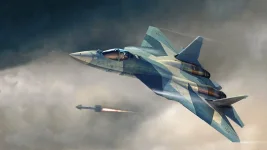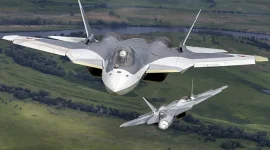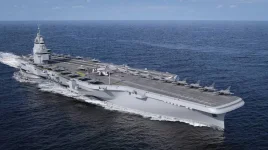- Views: 2K
- Replies: 9
In a significant move that underscores the enduring strategic partnership between Moscow and New Delhi, Russia has reportedly offered India the opportunity to lease a second Akula-class nuclear-powered attack submarine (SSN).
This proposal comes as India works to modernise its underwater fleet and project power across the Indo-Pacific region, reaffirming deep-rooted trust in bilateral defence technology collaboration.
The offer is for a vessel in addition to the Akula-class submarine India is already slated to receive.
In 2019, the two nations signed a landmark agreement worth approximately $3 billion for the lease of an Akula-class SSN, which has been informally designated as INS Chakra III. This submarine is currently undergoing extensive refits and upgrades at a Russian shipyard and is scheduled for delivery to the Indian Navy by 2028.
While official sources have not confirmed the identity of the newly offered submarine, defence analysts speculate it is likely the K-519 ‘Iribis’, a Project 971I Akula-class hull.
The construction of the Iribis began at the Amur Shipyard in 1994 but was suspended in 1996 when the vessel was just over 40% complete. Should India accept the offer, the submarine would require substantial construction and modernisation in Russia before being commissioned into the Indian Navy.
This development builds upon a long history of cooperation in the sensitive domain of nuclear submarine operations.
India previously operated the INS Chakra II, also a Russian Akula-class SSN, for nearly a decade from 2012 to 2021. The experience gained by Indian crews during this period was instrumental in developing the protocols and skills necessary for operating a nuclear fleet and has been a crucial stepping stone for India's own indigenous submarine programmes.
The Akula-class is a formidable platform, renowned for its stealth, speed, and powerful arsenal. These submarines, which can reach speeds of up to 35 knots and operate at depths of 600 meters, are designed as "hunter-killers."
Their primary roles include tracking and neutralising enemy submarines and surface warships, as well as providing protective cover for friendly ballistic missile submarines (SSBNs), which form the backbone of a nation's sea-based nuclear deterrent.
They are typically armed with a mix of torpedoes and long-range cruise missiles.
The potential acquisition of a second advanced SSN would provide a significant boost to the Indian Navy's capabilities.
Nuclear attack submarines offer unparalleled endurance, able to remain submerged for months at a time, a critical advantage for maintaining a persistent presence in strategic waters like the Indian Ocean and beyond. This capability is vital for sea denial, intelligence gathering, and safeguarding India's extensive maritime interests.
This offer arrives as India concurrently pursues its own ambitious domestic submarine construction plan, including the development of six indigenous nuclear-powered attack submarines under the classified Project 75 Alpha.
The experience from operating leased Russian submarines provides invaluable training and technological insight that directly supports and de-risks this indigenous effort.
The reinforcement of the submarine fleet is seen as essential for maintaining a credible deterrent and ensuring stability in the increasingly contested Indo-Pacific.




